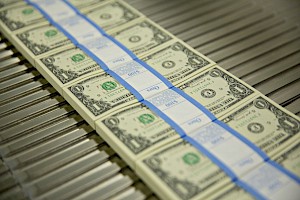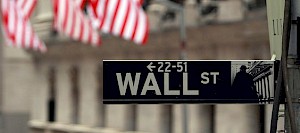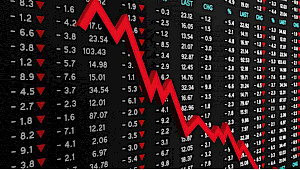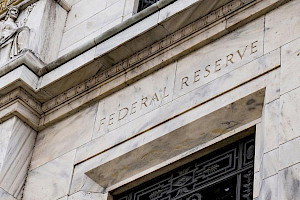The central bank of almost every country in the world owns gold — except Canada. Here’s why that’s a mistake.
November 16, 2022Originally published in The Toronto Star on November 11, 2022 as a contributing columnist.
Gold is money, full stop. It’s not a shiny pet rock, as the crypto crowd might want to believe. And it’s not some antique instrument that no longer serves a purpose in this new digital world. It has been used as money for thousands of years and while paper currencies have all come and gone (mostly to zero), gold has always retained its value.
For that reason, the central bank of almost every country in the world owns gold — some more than others — as part of their foreign exchange reserves.
Almost every country that is, except Canada.
Canada sold all of its gold holdings over the past 20 years, mostly at rock bottom prices in the early 2000s, much to the astonishment of the “hard-money” crowd and almost anyone who has read a book on economic history.
In a May 2022 interview with Kitco news, former Bank of Canada (BoC) Gov. David Dodge explained the reasoning behind the bank’s decision to off-load its gold holdings. “The issue is quite clear, that it costs to hold gold, whereas holding U.S. or Chinese or Euro bonds yields you a return,” said Dodge. “That was a strong view. And a view that our international monetary system was in a place that was sufficiently robust that holding this antique instrument of stability called gold really didn’t make any sense.”
To suggest he was flat out wrong would be kind. While storage costs are a factor in holding gold, it should be noted that since 2000, gold has gone up sixfold and outperformed numerous assets, including the S&P 500. And worse still, the bond returns Dodge was referring to have hovered close to zero since Canada dumped its gold.
For some explanation as to why the BoC continues with its no-gold policy, I turned to Martin Murenbeeld for some answers. He specializes in gold and foreign exchange markets, as well as domestic-international financial and economic trends and publishes the weekly Gold Monitor. From his perspective, Canada does not need to own gold because as he sees it, the Canadian dollar is a satellite currency to the U.S., making Canada part of a U.S. currency block. If the BoC ever needed liquidity, it can tap into the swap lines it has with the U.S. Federal Reserve System.
Swap lines are agreements between central banks to exchange their countries’ currencies with one another, used to stabilize markets when markets become stressed. Given the U.S. has the world’s largest gold reserves, he reasons that we can basically ride on America’s coattails. Murenbeeld likens the “U.S. currency block” to Europe and its EU currency block. Fair point, but unlike Canada, even the smallest partners in the EU block own gold. Germany, the dominant economic partner in the EU has 3300 tonnes, and tiny Portugal owns 382 tonnes.
Riding America’s coattails is all fine and well, but what happens if the U.S. experiences a U.S. currency crisis as a result of either its reckless debt growth or its massive money printing? Or worse still, an internal civil war? Should Canada go down with the ship? Murenbeeld believes that scenario is certainly possible and if that were to happen, the U.S. would be forced to provide some gold-backing once again to its currency, as it did prior to 1971. That’s why the U.S. will never sell its current gold reserves. That said, Canada and the Canadian economy would be banking on an America with a rational and functioning political system, which by today’s standards, is not a very comforting thought.
Also of concern is the prospect of a global monetary system reset, which I wrote about recently. Russia, China, and the other BRICS countries (Brazil, India and South Africa), in general are jockeying to create an alternative trading currency to the U.S. dollar. They are soliciting and receiving interest from non-aligned countries in the Gulf and Global South. And what have all these countries been doing the past couple of decades, especially in the past 10 years? Accumulating gold and reducing their U.S. dollar holdings.
Since 1995, 46,000 tonnes of gold have gone from the west to the east. And the buying continues. Since 2010, central banks around the world have been stocking up on gold, recently at an accelerated pace. In Q3 of this year, a stunning 400 tonnes of gold were purchased by central banks — a lot of it anonymously. The likely buyers are the usual suspects; China, Russia, India and Saudi Arabia. Why would they be doing this without some future purpose? A likely reason is that a gold backing would give any new trading currency the credibility it would need to compete with the reigning U.S. dollar. (Keep in mind that even the dollar and every other currency invention in history needed gold backing in its infancy.)
I asked Randy Smallwood, chairman of the World Gold Council (WGC) why central banks around the world own gold and continue to add to their reserves. The response is unsurprising to anyone who has studied economic history.
Gold provides a number of benefits. As a diversifier to other FX reserves, gold provides liquidity, safety, and return (when measured over long periods). Gold also has a low correlation to other traditional reserve holdings making it a great hedge asset. Its apolitical, since it is no one’s liability and therefore not associated with the politics of any specific country. It can be stored at home, providing a higher degree of safety from potential interference from a foreign power. And lastly, gold can be used as valuable collateral: In several recent episodes, gold has been pledged as collateral to obtain hard currency liquidity during periods of acute market stress.
Using the methodology by which the WGC analyses portfolio reserves of global central banks, I would propose that anything from five per cent to 40 per cent gold allocation would offer an optimal risk-to-reward ratio, although I don’t believe the upper range would be realistic for Canada. At five per cent, it would represent about 100 tonnes of gold and at 40 per cent it would be about 800 tonnes of gold.
Smallwood summed it saying, “It’s time for Canada to grow up and act like an adult, building independent, real central-bank reserves that stand the quality test independently of the United States and its dollar. And what better time than today, when the U.S. dollar is so strongly valued relatively to all other asset classes.”
A worthwhile recommendation for the Bank of Canada to consider, given the likely prospect of either a U.S. dollar crisis and/or a bifurcation of the global monetary system in the future.
Frank Giustra is a Canadian businessman, global philanthropist, CEO of the Fiore Group and co-chair of the International Crisis Group. He is a freelance contributing columnist for the Star.
Follow him on Twitter: @Frank_Giustra










